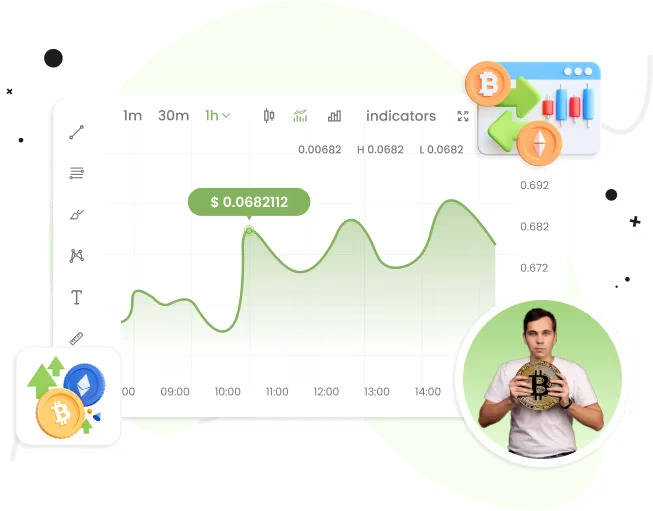Maximizing Crypto Exchange Revenue: 7 Profit Models and Strategies for Success
The crypto exchange market is booming—with trading volumes reaching trillions annually. But beyond volume, what truly drives profits is the revenue model behind your exchange.
Whether you're launching a startup platform or scaling an existing one, choosing the right monetization strategy is crucial. A strong revenue model ensures sustainability, investor confidence, and long-term user retention.
Here are the 7 most effective revenue models for crypto exchanges and how to select the best mix for your business:
1. Trading Fees – The Foundation of Exchange Income
Trading fees are the most common and consistent revenue source. Users are charged a small percentage for each trade—usually based on a maker-taker model, where:
Makers (who add liquidity) are charged a lower fee.
Takers (who remove liquidity) pay a slightly higher fee.
Some exchanges use flat rates (e.g., 0.2% per trade), while others apply tiered structures based on trading volume.
✅ Best for: All exchange types, especially high-volume platforms.
2. Withdrawal and Deposit Fees – Hidden but Reliable
Exchanges often charge a fee for crypto withdrawals or fiat transactions. While crypto withdrawals are usually network-based (e.g., gas fees), fiat transfers via banks or payment gateways involve platform-defined fees.
These are often overlooked but can generate significant income over time—especially with active retail users.
✅ Best for: Exchanges dealing in multiple currencies or offering fiat on/off ramps.
3. Token Listing Fees – Monetize Exposure
Emerging crypto projects are willing to pay to list their tokens on popular exchanges for visibility and trading access. These listing fees can range from a few thousand to millions of dollars, depending on your platform’s reputation.
While lucrative, it’s essential to vet projects carefully to avoid associating your brand with scams or low-quality assets.
✅ Best for: Established or mid-size exchanges with growing user bases.
4. Margin Trading and Lending – Leverage for Higher Revenue
Offering margin trading (borrowed capital for leveraged positions) or crypto lending can significantly boost revenue through interest spreads and liquidation fees.
It requires more technical complexity and legal clarity but appeals to professional traders looking for advanced tools.
✅ Best for: Exchanges targeting pro traders or DeFi-savvy users.
5. Launchpad & IEO Fees – Boost Ecosystem & Profits
Exchanges can host Initial Exchange Offerings (IEOs) for new tokens, acting as the fundraising platform and earning a percentage of the total funds raised.
Some platforms even offer launchpads—complete token launch services including marketing, tokenomics design, and investor onboarding.
✅ Best for: Platforms aiming to become ecosystem leaders or innovation hubs.
6. Subscription Models – Premium Tools for Power Users
Some exchanges monetize via premium plans—offering access to advanced analytics, faster withdrawals, higher limits, or API priority.
This works well for professional traders, institutions, or developers who need enhanced access or features.
✅ Best for: Exchanges with strong UX, analytics, or data tools.
7. In-App Promotions & Ads – Monetize Attention
As user bases grow, exchanges can offer ad space or featured listings to third-party tools, NFT projects, or DeFi apps.
Caution: Ads must be relevant and non-intrusive, or risk damaging trust.
✅ Best for: Platforms with high daily active users (DAU) and high engagement.
How to Choose the Right Mix?
There’s no “one-size-fits-all” answer. Your revenue strategy should reflect:
Your target user base (retail vs. pro traders)
Platform maturity (startup vs. established brand)
Regulatory compliance (especially for margin, lending, and IEOs)
Long-term scalability (e.g., staking rewards, cross-chain support)
Working with an experienced crypto exchange development company helps you define a revenue model that’s not only technically feasible, but also aligned with your growth goals and compliance needs. They can also ensure that monetization mechanisms are embedded securely into your platform from day one—without disrupting UX or trust.
Final Thoughts
Monetization is what turns a crypto exchange from an exciting idea into a sustainable business. Whether you're planning to earn through fees, listings, launchpads, or premium tools, the key is balance—generating revenue without alienating your users.
Start with one or two proven models and evolve as your exchange scales. With the right strategy and a capable cryptocurrency exchange development company as your partner, your platform can grow into both a secure trading hub and a revenue powerhouse.
















